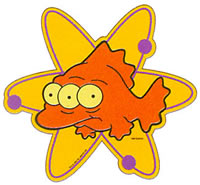
That fish was collected nine miles upstream from the Connecticut Yankee Nuclear Power Plant, a distance that encouraged Entergy officials to cast doubt on the source of the contamination:
We are aware that the Vermont Department of Health may have detected strontium-90 in some fish from the Connecticut River. There is absolutely no evidence to suggest that Vermont Yankee is the source for the strontium-90. We have 31 monitoring wells on site that are tested regularly. No groundwater sample from any well at Vermont Yankee has ever indicated the presence of strontium-90, or any other isotope other than tritium. We do not know why the Governor would suggest Vermont Yankee is the source, but there is no factual basis for that suggestion.”
Vermont Gov. Peter Shumlin seemed to tie the contamination to the plant in a statement he released on Tuesday, but he backed off that claim on Wednesday after his own Health Department echoed Entergy:
“We cannot associate low levels of Sr-90 in fish in the Connecticut River with Vermont Yankee-related radioactive materials without other supporting evidence,” the Vermont Department of Health said in its statement on the finding. The strontium-90 was only slightly above the lower limit of detection. The state’s radiological health chief, Bill Irwin, told the Burlington Free Press he would eat the fish:
“It would not be of concern to me,” he said. “The risk is very small.”
Gov. Shumlin, however, said he would pass on eating the fish.
Shumlin wants Vermont Yankee shut down when its license expires in 2012. The Nuclear Regulatory Commission has approved a 20-year extension for the plant, but Entergy also needs approval from the state. Expecting denial, Entergy is preparing to sue Vermont.
Although no strontium has been found in groundwater samples taken at the plant, strontium-90 has been found in soil samples taken near a pipe that leaked tritium into groundwater, according to the Burlington Free Press.
A “bone-seeker,” strontium-90 is chemically similar to calcium, so the body deposits it in bone and marrow, where it is known to cause cancer. Radioactive isotopes of strontium are particularly dangerous to the growing bones of fetuses and children.The Vermont fish were taken from the river months before the Fukushima accident. Another dangerous isotope found in Hawaiian milk this Spring, strontium-89, has been associated with Fukushima.